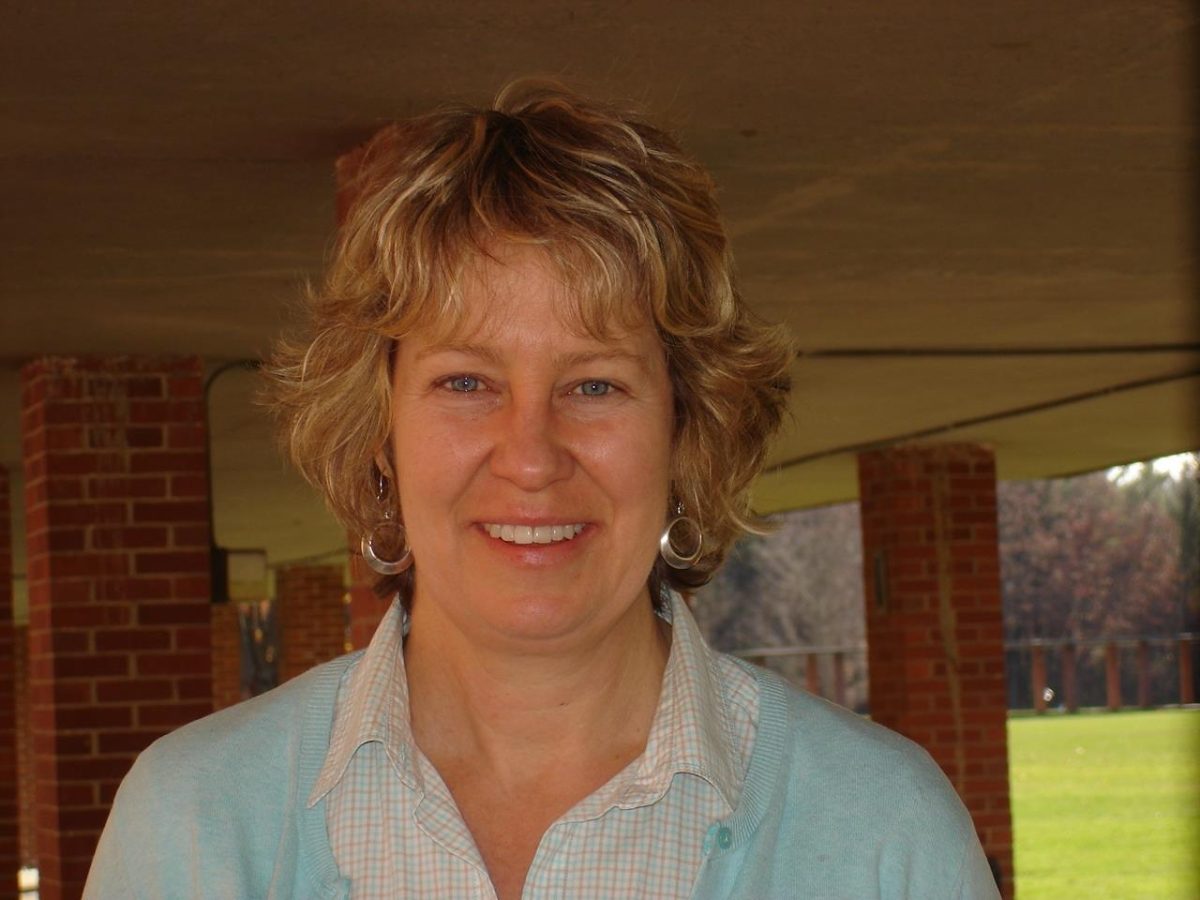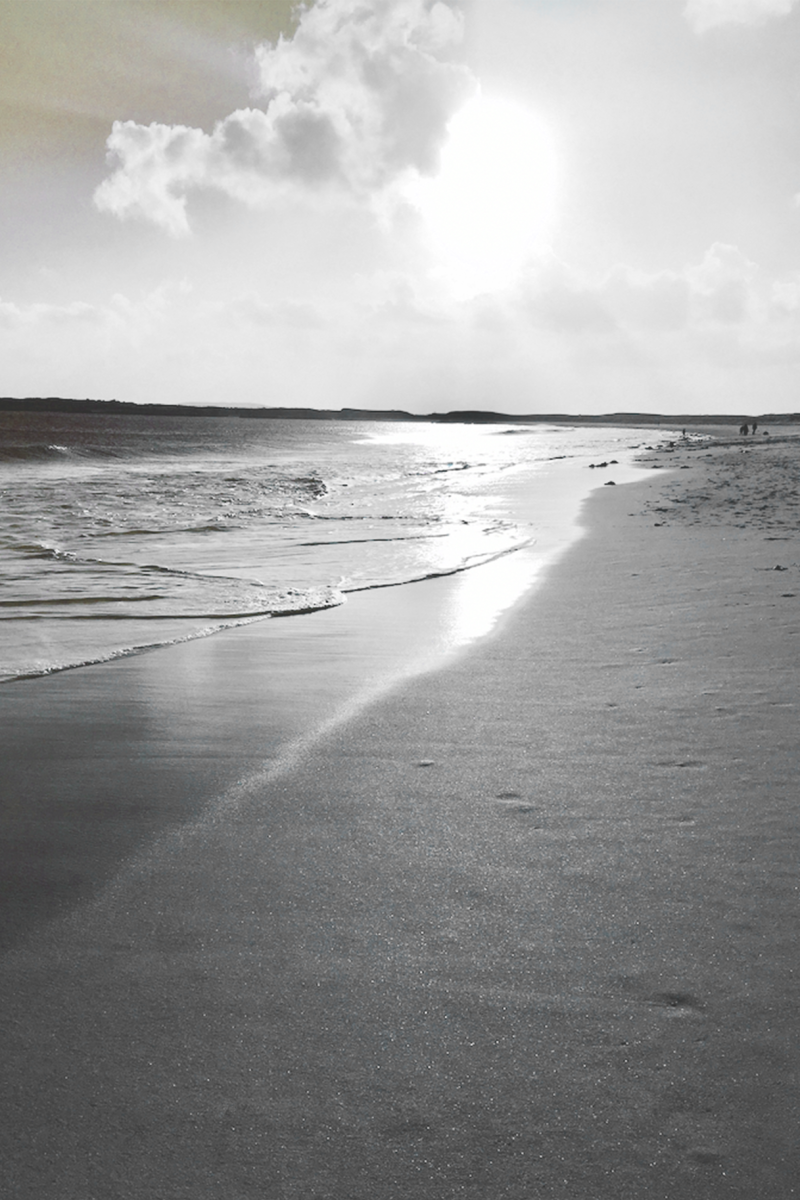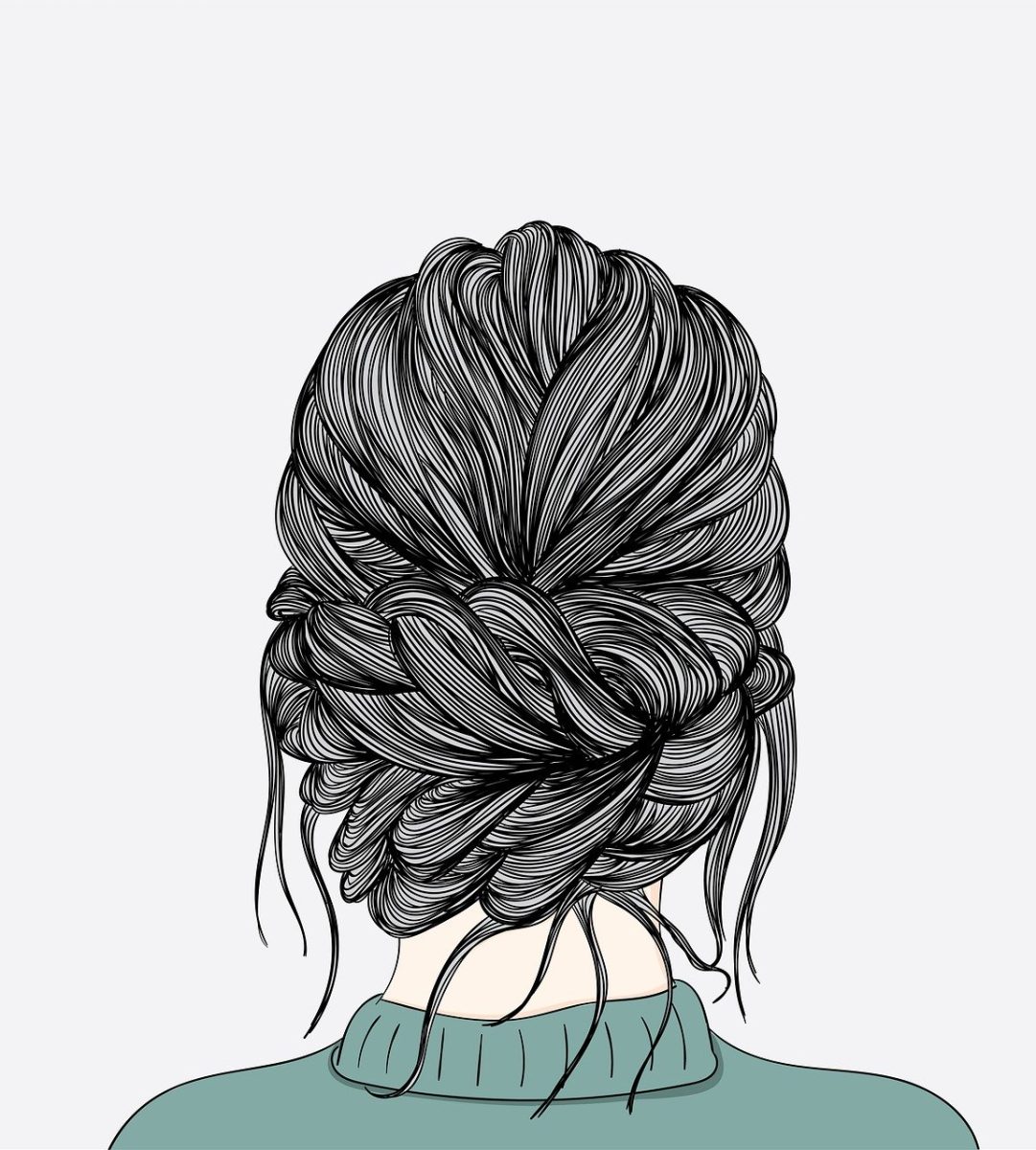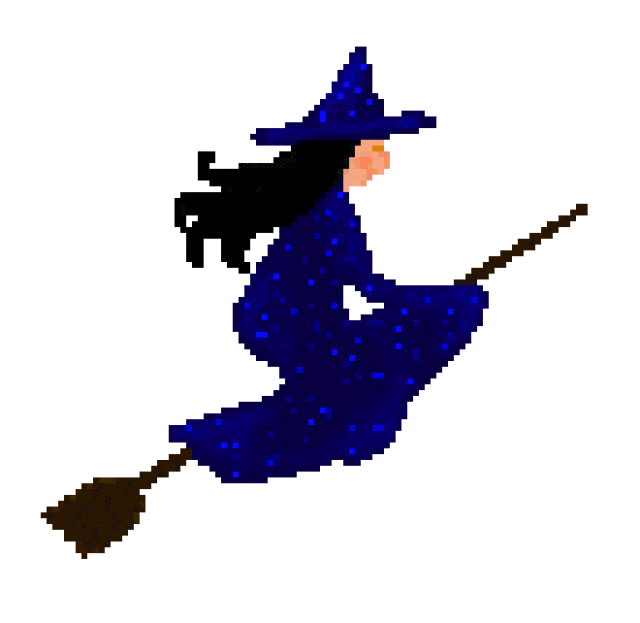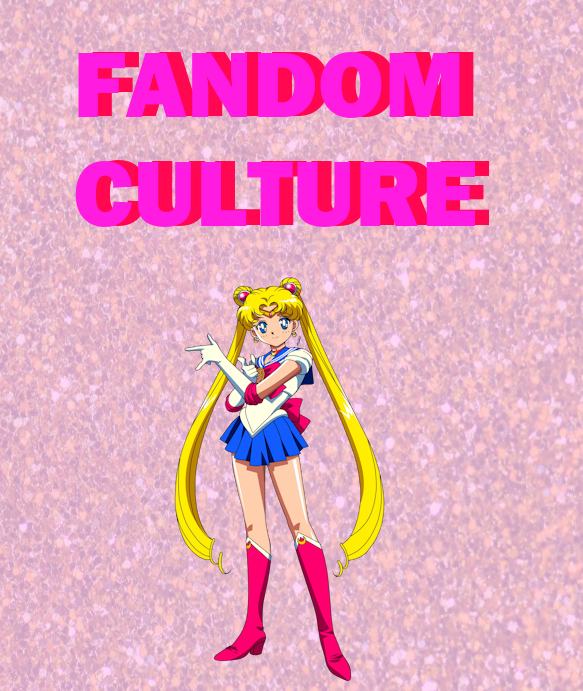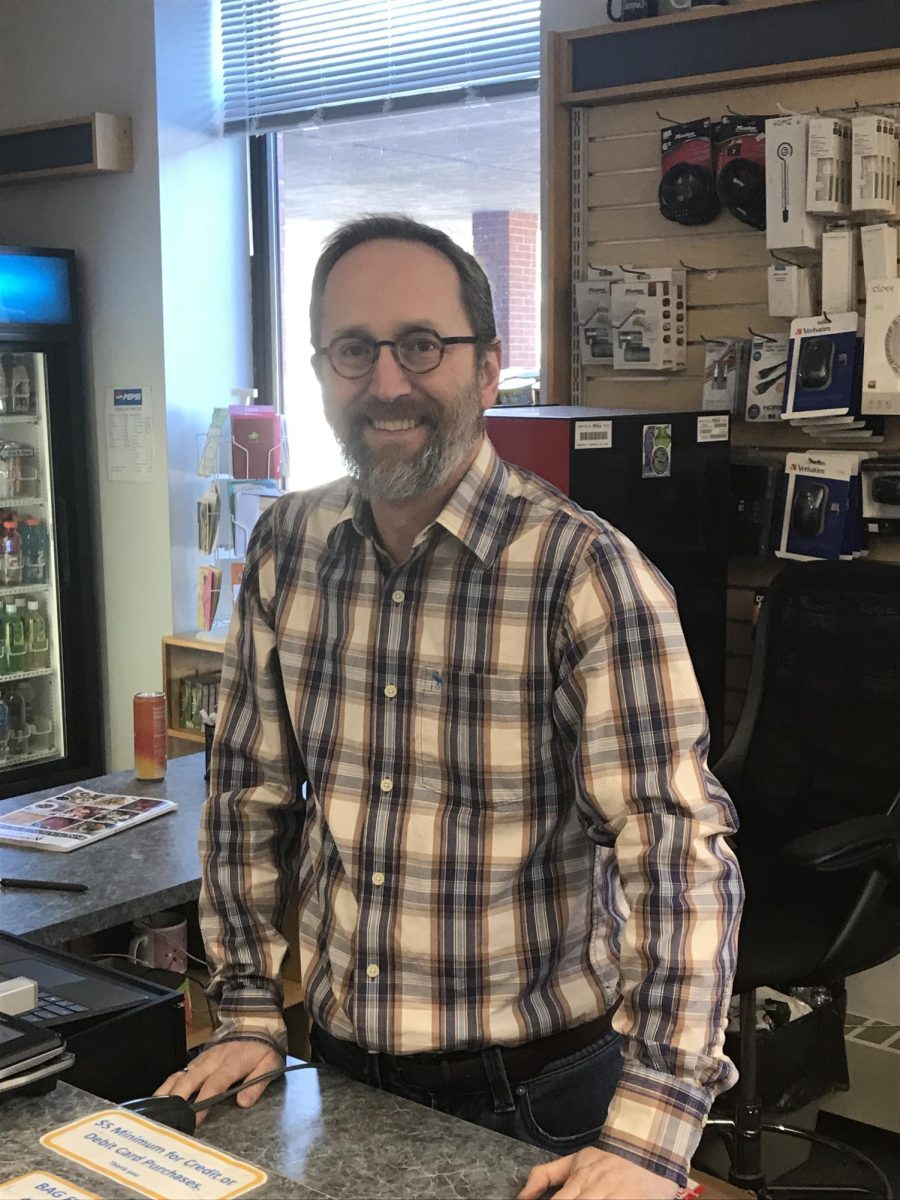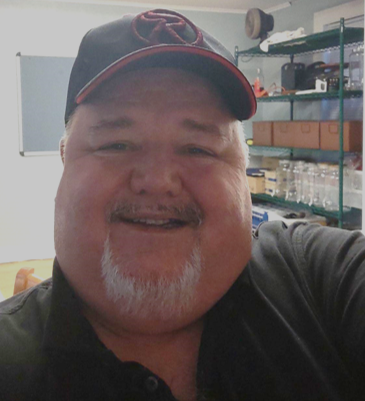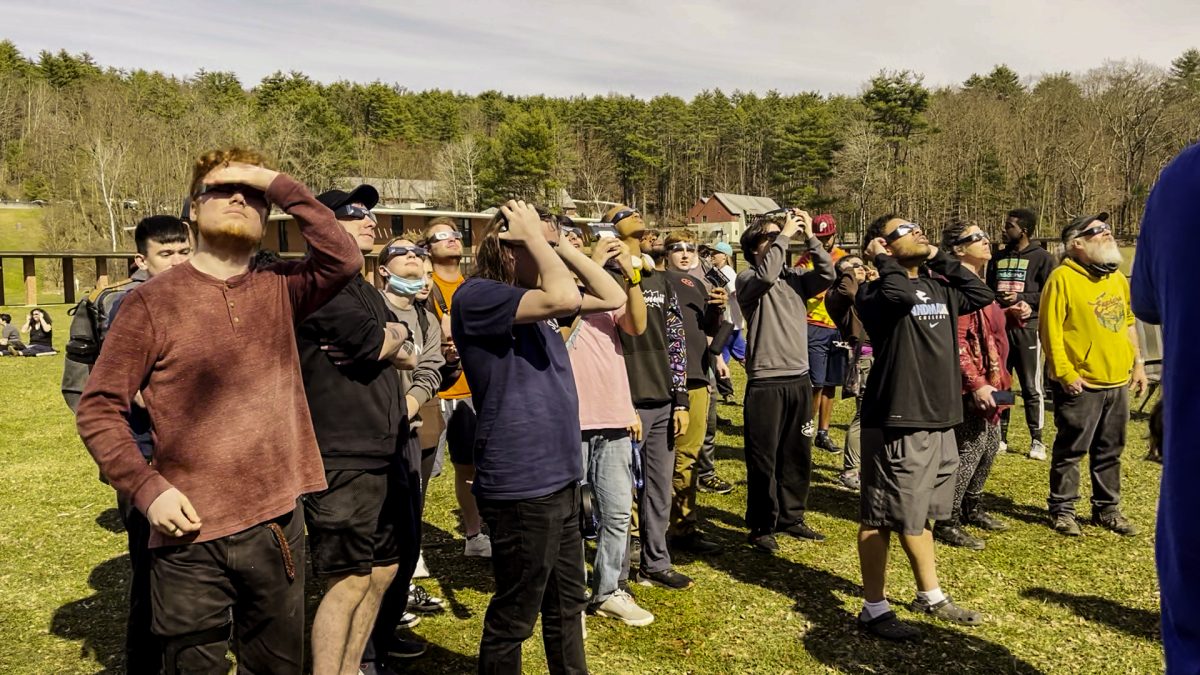Editor’s Note: The following interview originally aired on WLMC Radio and has been edited for clarity.
Hello, everyone! Welcome back to another episode of Sounds From a Distance. I’m Tyra Cole, your host. Today, I have a special guest: Christie Herbert, the Studio Arts professor. Can you please introduce yourself?
Hi, everybody! I’m Christie Herbert, a professor at Landmark College. I’ve been teaching here since the summer of ‘86. Because I’ve been here for so long, I’ve more or less grown up professionally with the college and have had a lot of different roles.
Did you come to Landmark specifically to teach ceramics?
No, I actually came to Landmark with my Masters in teaching English as a second language. I’d just finished working at a refugee camp in Thailand for two years. I was very interested in teaching English because both my father and brother have dyslexia.
Oh, wow.
I was very interested in this brand new college, so I thought I’d just take a summer job to see what it was like. And I thought that my background in teaching English to people who spoke English as a second language would be useful at Landmark because it’s fairly similar to what dyslexia is like.
So I got the job, and I started as an English teacher and a tutor. And then I slowly evolved from there into getting very interested in learning disabilities, as well as teaching and learning at a very deep level. From there, I ended up teaching and developing a number of educational courses over a few decades.
And while I was doing that, I was also very interested in art and pottery. I was something of a ceramic artist on the side. So, at a certain point, I decided that we had to have a studio at Landmark. It’s a no-brainer that ceramics would be amazing anywhere, but especially at Landmark. Though I didn’t know if I’d even end up teaching ceramics here, I wanted to get it started. And once we got the studio established, I went back to college for an MFA in ceramics.
Oh, OK, because that’s what I was also going to ask, like, so did you learn ceramics separately before you started teaching it? Or like, was it something that happened as you were teaching it?
I started doing ceramics when I was in high school, and I did some in college. And then I was doing it as a kind of hobby that was perfect for teaching. Landmark can be a very intense place, so ceramics is a quiet, hands-on activity to balance things out.
I’d developed a lot of experience before I went and got my MFA; I was also a member of a local pottery studio, where I sold my work and helped run things. I kind of came into it with a lot of experience, but it was great to go and get my Masters of Fine Arts and really be able to study ceramics & contemporary art more deeply.
And getting my MFA also meant that I could teach ceramics at Landmark, because you can’t teach at a college without having the degree. So, I couldn’t use my masters of teaching in ESL and legitimately teach in the Art Department. And that really motivated me to get my MFA, because I knew that I’d love teaching art and ceramics here. So that’s what I did.
What has your experience with teaching neurodiverse students been like? Do you see a difference between teaching them and teaching neurotypical students?
You know, the longer you teach and the longer you live, the more neurodivergent everyone seems. The categories matter much less; it’s more about how you know to connect with your students. Essentially, how is someone doing? Are they feeling safe & thriving here? And if the answer to any of those is no, then I’m looking really deeply for what’s going on. Like what can I do as a teacher to support them to have a better experience?
I could probably talk from now until Christmas about neurodivergence. You know, there’s a big turnover of people like me who are just starting to retire, and the people who founded the college are moving out and a whole new crop of people are coming in, which is very exciting and very good. And I’m mentoring some of the new faculty. Like I’m working with them. Part of my job is to have lunch once a week with the new ceramics person. Oftentimes, the new teachers are like “I’ve taught here and there, and now I’m at Landmark and it doesn’t feel that different. How’s it different?”
And I like to say, teaching at other places you can get away with some weak teaching skills. But at Landmark you can’t. Because if you take a look at another at another place, another classroom, and you take the two or three students that are struggling the most, and then you take the two or three from all those classes and put them into one class together, that’s what you have at Landmark. Not only the struggles, but the brilliance and the humor and all of the wonderful things. Right? So, if you’re teaching a group of students, all of you know, there’s a lot of divergence and diversity.
If you really want to teach here, you’ve really got to care a ton about wanting to understand and accept and not judge the students and figure out like it’s an amazing, wonderful, neurodivergent puzzle. Every day like, what am I going to do to make this group work? What am I going to do to reach this particular student who’s not able to do any work or seems really frustrated or whatever is going on?
So that’s how I’m looking at neurodivergence. It’s like a hidden phenomenon. The main thing is trying very hard as a teacher, not to judge, not to make the kind of typical glib judgments that our culture makes like a person’s a slacker, a person’s not trying, a person doesn’t have self-control, whatever it is.
I know that there are a bunch of different types and styles of ceramics. Are there any that you feel more drawn to and personally enjoy making?
Christie: I’m going to be leading a study abroad trip to Japan this summer. It’s the 4th time that I’ll be teaching a course called The Intersections of Art and Culture of Japan. I lived in Japan a year after college. I taught a year in Japan and I’m very, very interested in Japanese ceramics and that plays into my work very much. Like, I’m not interested in perfection. I’m very interested in subtlety, in what happens to the medium, how we use pieces that we’re working with.
I do both sculptural work and then I do a lot of functional work. Work that I make because it’s fun. And I happen to have two children who are right around the age where a lot of their friends are getting married, or they are getting married. So, I have been on a major wedding present circuit for several years now, making big platters and making really interesting pieces as gifts or for auctions or whatever. I’m privileged enough that I don’t have to support myself off of my work.
Another kind of deep and abiding interest of mine is the use of color and abstraction on the surface of forms in terms of decorating. I could go on, but I don’t want to bore your listeners?
Tyra: No, no, no, no. No, we love hearing this. So do you use a lot of the things you make? I’m a person who really likes crafts. I really love the idea of making things that I could use like this bag, which I crocheted. It took me so long to do, but I did it and I’m happy that I did it because I have utility for some of the things I make. Is that sort of the same thing with you?
Oh, absolutely. Someone told me many years ago that if you have a lot of your own work in your house, it’s like looking in a mirror; like a narcissist, which kind of turned me off. After a while I got over that because I have made a lot of the work that I have in my house–and I have a ton of pottery in my house from my own and others–is pottery that I love and I want to live with it and I want to use it and I want it to be part of our family. And the same is true for my family, my husband’s family, my friends, my pottery is everywhere.
I love connecting. What is better than being with friends and family around food? Oftentimes the kind of pottery I’m making is about celebrating. Like, here’s this platter for the birthday we’re celebrating. Or here are these plates that we’re putting out before we light a candle and sit down together. I mean, I do look at pottery that way. I definitely do. I’ve made work that’s exactly what I want to serve my food on: the shape, the size, the color. And then friends come over and go, “I’ll have some of those” and so I’m making more. <laughs>
Have you ever made anything specifically for a showcase or an art show?
Yeah, I have. I have to say that I have not pushed myself as hard to try to show my work as I should, and that’s what every artist says. I’m right now in the process of developing a series of sculptures in my home studio that I hope to show. But I have had shows in galleries I just showed my work a show in my town.
Now that I’m in something called phased retirement–I’m working half time at Landmark now–I have more time. I’m making a lot of work. That’s part of what I was hoping to do, partially, in retirement; just the peace of mind and the quiet and the time to develop bodies of work. Plus, I’m really psyched to be teaching a highly advanced course in the spring that’s never been offered before; for students who have kind of taken every other ceramics course and want to go really deep on the wheel.
One of the reasons why I even took your ceramics class, apart from being interested in ceramics, is that I felt like it would be something that is really relaxing, and that is something that I did feel. Even when I was working on my own work outside of class, it’s one of those few things where the homework didn’t feel daunting as much as homework from other subjects that I do because it is just so relaxing to do.
Absolutely. I think we need a lot more of it. It’s such a cliche that everything we’re doing is digital, even writing. We’re dictating and we’re talking and we just are hungry for touch, right? Even if it’s touching a pencil to a paper, or touching clay, or weaving or crocheting, I think we’re meant to do that. This is what we’re meant to do as humans, and it’s such a relief when we get back to it.
But I also think that clay is an interesting medium because a lot of times students here at Landmark take ceramics and they come in and they’re like, I’m not an artist. I suck at drawing. I don’t like art, and then all of a sudden they get their hands in clay and it’s like, oh, actually this is something I’m really drawn to and really good at. And they’re surprising themselves because it’s a completely different intelligence to mold something with your hands than to draw, or to create digital, or do what you’re doing with the radio show.
I’m sure some at some point down the road we’ll be able to scan our brains for much more detailed information, and if we scanned 200 Landmark College student brains, and it was all color-coded for giftedness here and challenges here. The way we understand the brain already–like you might struggle with reading. For sure, there’s an unusual amount of talent around this hands-on mechanical, visual, spatial, intelligence. I’m blown away by many of the students. I mean, you were really talented. I remember that about you. I think you could see that ceramics was something that was just such an excellent vehicle for expression for you. And that’s exciting to me, to have someone come in that’s not even an art student. They’re just coming in and they’re like, oh, there’s a whole world here. I’m always hoping I can turn someone on to ceramics as a lifelong hobby, as a way to express themselves, and to calm themselves, and to ground themselves. My work is done, you know? It’s exciting.
Have you been interested in or tried any other type of art?
I’m probably one of the few art faculty who was really highly, highly focused on ceramics. My original bachelor’s degree was in English, and I love writing. I do a lot of creative writing. So, that is my other major art form. I read a lot and I write a lot to this day. And it’s another thing I’m wanting to do in retirement. I’ve dabbled in other art forms, but I haven’t seriously developed my abilities. I’ve taken classes, but I’ve just stayed in this zone of being very interested in ceramics.
How many students who have taken your ceramic courses, do you think tend to stay in that area, or maybe go onto having a career?
Very few because it’s such a rare and challenging field. To get a job teaching ceramics at a college is like winning the lottery. It’s so lucky and it’s so wonderful and there aren’t that many jobs out there. And people who try to make their living making pottery, it’s a long, hard slog. You just have to love it so much and be so resourceful that you make it happen.
There are some students who have gone on and continued with ceramics. A couple who are still doing ceramics have gone on for MFA’s and are doing ceramics, but very, very few. I hear from a lot of students who are doing it, continuing to develop their work and maybe sell it a little bit on the side and have a dream of continuing with that.
I’m not sure if this is the same thing as ceramics, but people who make sculptures via chiseling, is it sort of the same thing or is it like completely different?
One way to think about it is to think about what’s the material you’re working with. You can sculpt with clay. You can sculpt with wood and chip away at it and carve it. You can sculpt with marble. You can sculpt with a lot of different mediums. In that sense, sculpting is the method.
I’ve been teaching a sculptural ceramics class, and now the new faculty member, Cindy Ludlam, even as we speak, is teaching a sculptural ceramics class. Clay doesn’t really get chipped, but one way to make large ceramic sculptures is to take a block of clay and remove clay from it. Subtract or add, right? You can think about it in those general terms, like we take it away to make the shape and then we add back. We add features or whatever we’re trying to make.
Do you think the hands-on aspect of clay makes it much better to maneuver? Other forms of art are still hands-on, but you have to kind of use a tool apart from being able to directly put your hands on and make what you’re trying to make.
That’s such a smart question and really interesting. I think one way to think about clay is that it’s plastic, right? If you add water, it can come back to life. If you’re working with wood, once you chip, you’re done. Marble, you’re done. You’ve chipped it. You can’t wet it down and add it back. You can’t mess around. Now on a painting, on a canvas, you can paint over it. So that’s another way to think about it. You can keep layering and adding. But the real thing with ceramics is you can manipulate the medium with your hands in many shocking and surprising ways.
The big trick is always, and you probably remember this from me teaching, it’s all about timing, right? It’s like messing around with someone past the point that you should stop messing with them, they’re going to blow up at you, right? When the clay is dry, it’s done. You’ve had the conversation with it. I see students all the time, they’re trying to spray water on it and chip at it and it’s like, nope. But then again, what’s miraculous about it is then there are these insane saves, right?
Yeah, it’s definitely more forgiving in terms of like, you’re able to make more mistakes and fix it.
You are. And then on the other hand it’s not forgiving, and for the opposite reason of chipping wood. But then you’re not going to put the wood through a 2100-degree Fahrenheit oven and see whether it blows up or cracks, right? So, it’s both forgiving and then it’s really not.
But I actually think that students could really learn from experiences like that in the studio. To let go when things crack and break and fall and blow up, and someone else bumps their piece or whatever it is. Because that’s life, right? I sound like a Hallmark card, but you’ve got to know that the medium, while it’s so forgiving, it also can just shock you. Like you think it’s all good to go, you put it in the kiln, but the whole head could still blow off.
One thing I learned, both from your class but also just watching videos of people making clay things, is that especially if you’re making something big, you really have to hollow out the middle. Because if it’s too compact, it’s going to explode.
Totally. And even if you hollow it out, some things can go wrong. I just had a friend who’s never done any clay ask me to help her make a holiday gift for her boyfriend of a 2 1/2 foot, abstract nude woman sculpture. I’m like, what are you nuts? <laughs> This is a really, really advanced form!
But even hollowing something out, you never know. Things go wrong all the time. Glazes go wrong. Kiln firings go wrong. You have to be pretty open to not getting too attached to your work and getting attached to the idea. I always tell students. it’s just like when you’re drafting a paper. If you just lose the draft, it’s not the draft, it’s the work and the process to get to where it was. You should be able to go back. What do you remember? What can you do again? Let’s keep moving this forward, whether we have the physical thing or not. What remains is what’s important. What remains in your head around how you are approaching it. You can get back on the wheel. If you centered once, you’ll be able to center again. It might take you three times but you’re going to be able to do it.
Yeah, but you should watch out for those machines because they go fast! I remember when I was trying to make a cup and I pressed on the like pedal a little bit too hard.
Yeah, absolutely. You gotta have that experience.
We’re coming to the end of our interview, but I just want to ask one more question: if someone wasn’t sure whether they should or shouldn’t give ceramics a try, what would you say to them?
Give it a try, but you know yourself best. I’ve found that the only people who really shouldn’t take ceramics are people who have sensory issues around messes. It’s going to be a losing battle if you have severe sensory issues; it’s messy and gross, and you don’t have to push yourself into it. That’s rare, though. It’s a great community in the studio to hang out and make friends.
Right, you heard it here, guys. Give it a try. Again, I’d like to thank Christine for taking the time today to do this interview with me. Thank you so much.
Thank you. So nice to see you again.

